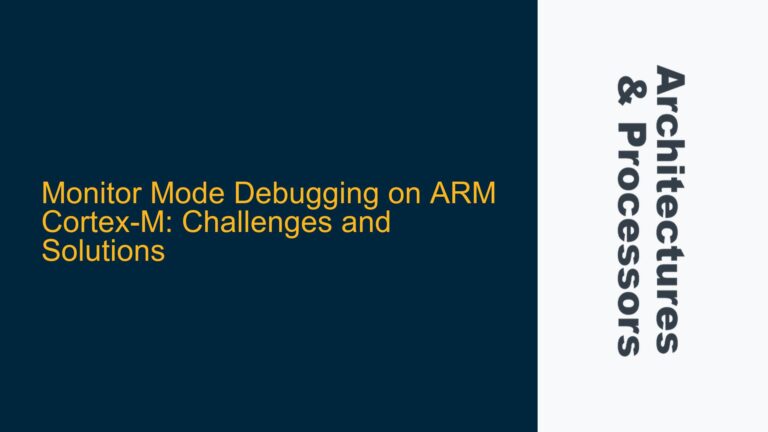STR755FV1T6 UART Communication Failures and Debugging Limitations
The STR755FV1T6 microcontroller, based on the ARM7TDMI core, is a robust and widely used processor in industrial applications, including ultrawave generator systems. However, in this scenario, the system experiences intermittent failures where the driver card stops functioning without apparent cause. The issue is suspected to be related to a software or safety interlock mechanism that cannot be acknowledged, dismissed, or reset. The hardware has been thoroughly inspected and confirmed to be free of defects, which points to a potential software or firmware issue.
The STR755FV1T6 features a 20-pin GPIO connector, which, according to the datasheet, is likely routed to the UART interface. UART (Universal Asynchronous Receiver/Transmitter) is a critical communication protocol for debugging and interfacing with external systems. However, the lack of programming hardware and limited access to the OEM’s source code and schematics complicates the debugging process. This situation is further exacerbated by the absence of external debuggers or UART debug logs, which are essential for diagnosing runtime issues.
The primary challenge lies in identifying the root cause of the failure without direct access to the microcontroller’s internal state or communication logs. The UART interface, if properly utilized, could provide valuable insights into the system’s behavior, but its configuration and usage are unclear. Additionally, the system’s reliance on third-party driver cards and the lack of support from the supplier or machine manufacturer add layers of complexity to the troubleshooting process.
Potential Causes: UART Misconfiguration, Safety Interlocks, and Firmware Bugs
The failure of the STR755FV1T6-based driver card can be attributed to several potential causes, each requiring careful investigation. The first and most likely cause is UART misconfiguration. The UART interface, if not properly initialized or configured, can lead to communication failures, preventing the system from sending or receiving critical data. This misconfiguration could be due to incorrect baud rate settings, parity bit errors, or improper handling of start and stop bits. Additionally, the UART pins on the 20-pin GPIO connector might not be correctly mapped, leading to a lack of communication between the microcontroller and external devices.
Another potential cause is the activation of safety interlocks. Industrial systems often incorporate safety mechanisms to prevent damage or hazardous conditions. These interlocks can be triggered by software anomalies, such as unexpected sensor readings or timing issues. Once triggered, the interlocks may halt the system’s operation until the condition is resolved. However, if the interlock mechanism is not properly documented or accessible, resetting it becomes challenging, leading to persistent system failures.
Firmware bugs are also a significant concern. The STR755FV1T6’s firmware, developed by a third party, may contain undetected errors that manifest under specific conditions. These bugs could range from memory leaks and stack overflows to race conditions in multi-threaded operations. Without access to the source code, identifying and fixing these bugs is nearly impossible. Furthermore, the firmware might not include adequate error handling or logging mechanisms, making it difficult to diagnose issues when they occur.
Lastly, environmental factors such as electromagnetic interference (EMI) or power supply fluctuations could contribute to the system’s instability. While the hardware has been inspected and deemed functional, transient conditions during operation might still affect the microcontroller’s performance. These factors are particularly relevant in industrial settings, where machinery and high-power equipment can generate significant noise.
Troubleshooting UART Connectivity and Diagnosing Firmware Issues
To address the STR755FV1T6’s UART communication failures and diagnose potential firmware issues, a systematic approach is required. The first step is to verify the UART configuration. This involves checking the baud rate, parity settings, and stop bits to ensure they match the expected values. If the UART interface is accessible through the 20-pin GPIO connector, a logic analyzer or oscilloscope can be used to capture the signals and confirm proper communication. Additionally, the pin mapping should be cross-referenced with the datasheet to ensure the correct pins are being used for UART communication.
If the UART configuration is correct, the next step is to investigate the safety interlock mechanism. This requires identifying the conditions under which the interlock is triggered. If possible, the system’s operational logs should be reviewed to determine if any anomalies precede the failure. In the absence of logs, manual testing can be performed by simulating different operating conditions and monitoring the system’s response. If the interlock is software-based, temporary modifications to the firmware might be necessary to bypass or reset it. However, this approach should be undertaken with caution, as it could compromise the system’s safety.
For firmware-related issues, the lack of source code and debugging tools presents a significant challenge. However, some diagnostic information can still be obtained by analyzing the microcontroller’s behavior. For instance, if the system enters a hard fault or infinite loop, the program counter and stack trace can provide clues about the failure’s origin. This information can be extracted using a debugger or by manually inspecting the microcontroller’s memory. Additionally, if the firmware includes any form of error reporting, such as LED indicators or serial output, these should be monitored for abnormalities.
In cases where environmental factors are suspected, measures should be taken to mitigate their impact. This includes ensuring a stable power supply, using shielded cables to reduce EMI, and isolating the microcontroller from noise sources. If the system’s design allows, additional filtering or decoupling capacitors can be added to the power supply lines to smooth out fluctuations.
Finally, if all else fails, consulting with the OEM or seeking assistance from the ARM community may be necessary. While the OEM’s support is limited, they might provide additional documentation or insights into the system’s design. Similarly, the ARM community can offer guidance on debugging techniques and best practices for working with the STR755FV1T6 microcontroller.
By following these troubleshooting steps, the root cause of the STR755FV1T6’s failures can be identified and addressed, restoring the system’s functionality and reliability. While the process is complex and requires a deep understanding of both hardware and software, the insights gained will be invaluable for future maintenance and development efforts.






